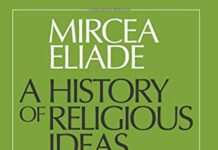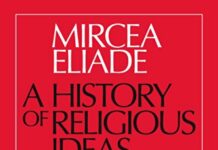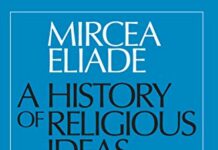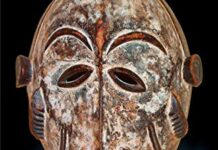
Ebook Info
- Published: 2011
- Number of pages: 256 pages
- Format: PDF
- File Size: 0.75 MB
- Authors: Mircea Eliade
Description
A groundbreaking work on myth, symbol, and ritual by one of the most acclaimed historians of our time. In The Sacred and the Profane, Mircea Eliade observes that while contemporary people believe their world is entirely profane or secular, they still at times find themselves connected unconsciously to the memory of something sacred. It’s this premise that both drives Eliade’s exhaustive exploration of the sacred—as it has manifested in space, time, nature and the cosmos, and life itself—and buttresses his expansive view of the human experience.
User’s Reviews
Editorial Reviews: From the Back Cover In a book of great originality and scholarship, a noted historian of religion traces manifestations of the sacred from primitive to modern times, in terms of space, time, nature and the cosmos, and life itself. The Sacred and the Profane serves as an excellent introduction to the history of religion, but its perspective also encompasses philosophical anthropology, phenomenology, and psychology. It will be of concern to anyone seeking to discover the potential dimensions of human existence. About the Author Mircea Eliade was chairman of the department of the history of religions at the University of Chicago. Among his many books are The Myth of the Eternal Reunion, Patterns in Comparative Religion, Birth and Rebirth, and Yoga: Immorality and Freedom.
Reviews from Amazon users which were colected at the time this book was published on the website:
⭐Nature of Religion In his introductory work into the subject of the fundamental quintessence of religion, Mircea Eliade introduces the basic approach and theme of any religious experience as a hierophany, the “act of manifestation” of the Sacred that brakes into the homogeneous nature of the Profane (11). Despite the vastness of the modes of manifestations of such hierophanies, they all share a basic congruence, which can be identified, studied, and demonstrated in a “primitive” religious expression throughout the world. Similarly, there is a paradigm of similarities of the various internalizations and responses that individuals and societies incorporated into the nature of their being in response to this sacred manifestation. Moreover, Eliade points out that the manifestations of this response can be found not only in “primitive” religions, but also in more complicated and sophisticated religion; furthermore, they are present in the declaratory desacralized expressions of modernity. Properly, all the variations of this response to a hierophanies can be found in the heart of the definition of human religious experience and constitute the core of religion.Homo Religious in Traditional SocietyWhether they occur in the remote past or happen in contemporary societies where the Profane has not established its firm ground, there are number of almost universally similar responses to a hierophany, which constitute the basic fabric of religion. Namely, when the sacred is manifested, a homo religious attempts to cling, to become one with the sacred. Using multiple examples from various and diverse cultures of traditional societies, Eliade both demonstrates and builds his theory on this principle. Namely, whether hierophany is represented by a polar, totem, mounting, stone, an opening in the roof, it always occupies the central place for the homo religious. It is the center of his universe, from which he settles by repeating cosmological mythical prehistory (47).This centrality, which Eliade refers by the term of ” axis mundi” is paramount for the individual in traditional society (43). Besides various manifestations of the axis mundi, such individual and his or her society incorporates the sacred into the fabric of their being by other channels. Here lays the understanding of human body, devouring food as a sacramental meal, and various rituals with a rich mythology. Eliade accentuates the importance of the last by describing how the rituals were created to demonstrate the sacred cosmological processes. By participating in cyclical rituals of the year or rites of passage, the individual and his society repeats and recreates in miniature the cosmological drama of the prehistoric, originating stories of chaos and order to the point not merely the “commemoration of a mythical…even”, but create something that “reactualizes the event” of creation (81,99).These rituals also transmitted idea that the death is only the beginning of another cycle of rebirth.Individual in traditional society also draws the rich imaginary of symbolic correlation between his immediate life and that of water, son, and moon. Ultimately, Eliade points that ability to connect to the sacred by the described above means constitutes the state in which a “primitive” individual obtains true being, the real life. This connection makes the possibility of the sanctification of the human life conceivable in the universe that is always wholly alive (165,167). Such sanctification incorporates the entire universe in which this individual resides. Physiological acts of consuming food, sex, as well as birth, puberty, death, human dwellings – this all becomes not only the projection of the sacred, but the Sacred in its proper sense. This mode of existence begins with the first breath of the human being and follows him throughout his or her life without leaving any gaps for the occurrence of the truly profane actuality.Judeo-Christian Heritage in the Mosaic of History of Religion Mainly, Eliade points to the differences in the concept of the sacred time that sets religions of the Judeo-Christian heritage on different footing. For the “primitive” religions, the sacred time is completely reversible and cyclical (68, 69, 73, and 75). It has been renewed within the yearly cycles or cosmic yugas in Hinduism (75,107,108). Even more, during various festivals, the individual becomes “contemporary with the cosmogony”, “present at the creation of the world” (79, 87, 91). Such individual gains a new beginning by participating in such rites and symbolically descending into the primordial chaos and rising to the new life (94,105, 106). Hence, here he or she seeks the cure from all the calamities of an individual and society (82, 83). Nevertheless, this unbroken cycle is not fund in the Abrahamic religions. Here, God’s theophany comes not in the “cosmic time”, but in particular “historical time” that has the beginning and the projected end (110). The cosmos is no longer constitutes the repeatable drama of recreation. Although hierophany still occurs, it’s primarily reduced to the theophany. Christianity, in which the Ultimate Reality becomes incarnate, creates possibility, promise, and hope of sanctification of the history itself (111). Although both Judaism and Christianity rely on and use the liturgical calendar, its various points celebrate numerous events of the past and do not attempt to recreate them in the same fashion as the “primitive” religions of traditional societies. Moreover, these celebrations commemorate the events that occurred in the historical time, not “at the origin of time” (111). Hence, the cyclical nature of time is abolished to give way for the linear interpretation of time.In addition, Eliade also points to what he presumes to be the different modes of Christianity in the Europe of his age. Namely, the author distinguishes “rural populations” and urban Christianity (178). If the former still retained some distinctions of the “cosmic liturgy”, the latter “is no longer open to the cosmos” (178, 179). One should add that despite the activities of various movements in the recent past, since the time when the first edition of The Sacred And The Profane has been published, the European balance in the described by Eliade dichotomy shifted even more toward the point of full elimination of the remains of the practitioners of the “cosmic liturgy” on that continent.Religion and Modernity Eliade describes the mental universe of the “modern” humanity as chiefly characterized by its desacralization. This desacrialization touched all spheres of the inner and outward life of the individual, stripped himself or herself from the Sacred; in addition, the degree by which he or she becomes free directly corresponds to the extent by which a “modern” individual is “demysticizied” (203). Eliade pursues in a great length the portrayal of the microcosm of such individual in contrast to that of homo religious. Namely, he points that the multidimensional life of the latter is not available to the representative of the “modern” humanity. Physiological acts that are part of the sacred word for the homo religious have lost its otherness, sacredness, the richness of being the communiqué with the transcended (168). Consequently, acts of eating, having sexual relations, procreating, or even urinating are without any sacred significance. Eliade also depicts the same process and the point of arrival to the present desacralization in the dimension of “Body-House-Cosmos” (172-179). The same also applies to the rites of passage, characterized by the “radical secularization of death, marriage, and birth” (186). This secularization leaves the “modern” individual alone at the end of his journey, without described by Eliade defense mechanisms, developed by the homo religious to find peace and hope of the new birth in the cyclical modus operandi of the universe (196,201). Hence, the “modern” humanity faces existential crisis. With the exception of brief mentioning of Hegel’s geist, Eliade does not describe or evaluate the answers to this challenge that the modern philosophical thought proposed in order to resolve this crisis (112). Nevertheless, Eliade pursues another path; he demonstrates that in a paradoxical way, the “modern” humanity still retains much of the traits and somewhat hidden characteristics of the representatives of the traditional society.New Hope Despite the fact that Eliade depicts a deem portrait of the “modern” individual, who no longer resides in a “open cosmos”, his views on the future of religious dimension of humanity are undoubtedly optimistic. The source of this optimism lays in the fact that “a purely rational man is an abstraction; he is never found in real life” (209). The author demonstrates that despite the outward brake with the past, society and a person that had been declaratory stripped from religion in fact retains most of its characteristics, whether consciously or subconsciously. Sometimes these characteristics are hidden, sometimes they are openly observable. Namely, Eliade points to what he calls “little religions”, the Marxism, “modern “private mythologies””, “initiatory scenarios”, “the cinema” and even “reading” (205, 206, 207,208, 211).Eliade also points that the “modern” humanity can not separate itself from the traditional one due to the fact that in its nature the former is the mere “product” of the latter (204). Although author does not state it explicitly, he implies that the “modern” individual in his or her core is still deeply homo religious. Personally, I think that one of the great passages of this book is found at the conclusion of the Chapter IV. I agree with Eliade’s brilliant characterization of the condition of the “modern” individual as the “second fall” (213). Religion in general and Christianity in particular are charged with the “awakening” of the “modern” humanity from its lethargic nightmare. Just as the early Church Fathers via the practice of “stealing from Egyptians” incorporated the best of the “pagan” achievements into Christian theology, the Church of today, una sancta, shall use the accomplishments of the modernity while providing a channel of connection with the divine and the sacred. In this task, the incredible mosaic of Christian diversity serves as a helpful tool to reach the diverse inquiries that are able to fulfill the gap in the psyche of the modernity. Where sacraments can be used by one branch of the Christianity in order to allow the “modern” individual touch the divine, they shall be used; where undivided fusion of rationalization with the understanding that humanity is an integral part of the universe and thus have to behave in a responsible manner is stressed, this approach shall be practiced as well. In this tremendous task, the Church shall also learn from the various successful and failed responses to modernity, offered by the other religions in Abrahamic tradition and beyond. Nevertheless, whichever steps are taken or paths are chosen, we should be in debt to Eliade for his description of the nature of the current separation of the humanity from the cosmos and the Sacred.Old and New This is not the first time I have been turning the pages of this book; however, it is the first time that I read it in an English translation. Soon after the fall of the Soviet Union, Eliade’s works became available in Russian translation. Hence, I read this book during my study at the newly established at that time Rivne Theological Seminary in Ukraine around 1996-1997. Understandably, Mircea Eliade remains to be a controversial figure in my old homeland due to the well-known allegations of his connections to the Iron Guard, work in Antonescu’s diplomatic services, and particularly reported stance on Jewish minorities in Bukovina and Bessarabia, the territories which now belong to Ukraine. However, no one denies his genius when it comes to the history and philosophy of religions. I can still recall the deep impact that the book had on me, challenging and forcing to re-evaluate basic presuppositions of my worldview. I remember struggling with the idea of basic congruence of the fundamental rites of different religions, carried from the traditional society to modernity. Although the reconciliation of this crisis came much later in my life, the experience of reading and contemplating on Eliade’s works made a significant impact of my outlook and formation of the theological worldview. In addition, Eliade’s treatment of Marxist ideology was more than very acute and recalled the fresh memories of the resent past at that time (206-207). Although Eliade does not go into many details, but every citizen of the former USSR can recognize through his work multiple signs of both modern and traditional society, which Marxism had introduced or transformed into new forms for our society.At this time, reading the book in different translation and in a considerable distance from first encounter, I’ve found many points that were missed or for which I was not ready at that time. I was also catching myself on the length of the theological and ideological distance that I’ve traveled since. Without questions, Eliade was one of the catalysts of this change and growths. But the best comes from understanding that this journey to the comprehension of the Sacred and the Profane for me has only truly begun.
⭐This little book had a big impact on students of religious history and comparative religion, and paved the way for scientists attempting to deconstruct homo religiosus. Eliade jumps off from Rudolph Otto’s Idea of the Holy, a pioneering work of comparative religion that characterized non-rational religious states experienced universally across world cultures. Eliade extends the comparative concept by describing how sacred impulses manifest themselves in space, time, nature, and human society, contrasting the religious viewpoint with that of the non-religious or profane person.In general, Eliade sees religious man using the sacred as a way of orienting himself in the world and transcending the limitations of the individual life lived in a specific time and place. Non-religious people abjure the tools and consolations of religion, but since they are descended from religious cultures, much of their thinking and practice ends up being bastardized forms of religion anyway.In the first chapter,”Sacred Space and Making the World Sacred,” Eliade describes an Australian Aboriginal tribe, the Achilpa, who believe that their god Numbakula fashioned a sacred pole from the trunk of a gum tree and used it to climb into the sky. The Achilpa carry a replica of this sacred pole with them as they migrate through the desert to new sources of food and water. This pole literally becomes the center of their universe, and if this pole breaks, their world disintegrates. Two anthropologists reported seeing the sacred pole break. The tribe wandered aimlessly for a while, then lay down on the ground and waited for death to overtake them.Sacred spaces become a way of organizing against primordial chaos, and it’s only within this sacred space that religious man has a real existence. Whether it’s a pole from a gum tree or Chartres Cathedral, the general principle is the same. Even non-religious people have special places that help orient them in time and space, such as the house they were born in, their elementary school, or the place where they first met their spouse.Sacred time operates the same way: it focuses and orients human activity, and becomes a repeatable way of stepping out of chronological time. Aborigines, for example practice ceremonies that summon the gods to reveal their presence in the here and now. Aborigines also recreate their origin myths by traveling to the places where the gods sprung out of the ground. Entering into sacred time, Eliade says, is an attempt to return to an “eternal, mythical present.” If you’re not religious, you might turn to drugs, or sex, or work or hobbies – anything that allows you to escape from the death sentence of historical time.To talk about the sacred in nature, Eliade invents the useful concept of hierophany, which is the revelation of the sacred through something else, anything from a stone or a tree up through a holy person or a god. For religious man, nature expresses something that transcends itself – a stone can represent absolute existence, the moon represents the cycle of birth, death and resurrection. The profane person needs nature too. Even with god out of the picture, nature can still symbolize beauty or harmony, or the perfect resting place – temporary stays against chaos and decay. For certain irreligious people, art can be used in a hierophanic manner to represent an eternal order that exists out of time (Keats’ poem, Ode to a Grecian Urn is a lovely expression of this thought).Eliade ends by taking us on a tour of various religious rituals. Initiation rites allow the old self to die and a new self to be reborn. Religious practices also ease the trauma of dying because you’re only dying to your profane existence in this world, which to the believer isn’t the real world anyway. The “real” world is the return to the timeless present created by the gods back in the days before human history. Eliade asserts that access to the spiritual life always entails death to the profane condition followed by a new birth. The Christian myth of Jesus rising from his tomb is but one manifestation of a universal human myth.Religious or not, everybody wants at least temporary relief from primordial chaos, the burdens of individual consciousness and the inevitability of death. Since we’re all pinned down in time and space by language, culture, temperament and genetic inheritance, we all need rituals that allow us to rise up and glimpse eternal order, harmony and peace. Eliade’s great contribution is to demonstrate how the particular manifestations of religion, whether it’s the Achilpa or the Methodists, spring from universal human needs.
⭐I love Mircea Eliade. He makes cosmology and how faith develops easier to understand than anyone else. His knowledge of the subject amazes me.
⭐Given that this book was originally written back in the 1950s and you can certainly see influences of mythological studies of the early 20th century in the work, many of the concepts presented in the book are, from what I can see, far more in line with modern scholarship regarding comparative religious studies, as well as Indo-European studies. As someone who studies Indo-European religions, I found the first two chapters to be really good and insightful in regards to how the author frame the work.Chapter 3, not so much because there was a lot of emphasis put on monotheistic religions, specifically the Abrahamic Traditions. However in chapter 4 the author rolled back and it ended with some good quality insights and parallels some of the sentiments I’ve had for a while regarding atheism. It also has a section after chapter four talking about the history of religious studies going back to some of the earliest known documents from ancient Greece. If you enjoy that type of history studies, that section itself has a lot of good value to it.So across the board, it’s a dated work, but still a really good piece of work to read for people who are interested in comparative religious studies.
⭐A fine book by Mircea Eliade. I also liked “The Myth of the Eternal Return” a marvellous book. Eliade becomes somewhat repetitive in his oeuvre and tends to disgress into lengthly examples of points he seeks to make but overall very interesting reading. If you like this kind of stuff, do also check out the members of the so called “Traditionalist School”, such as Seyyed H Nasr, René Guénon, Frithjof Schuon, Martin Lings and Wolfgang Smith.
⭐The sacred and the profane (book) arrived as expected in good condition and I am enjoying it thoroughly…thanks
⭐This book kills antitheism.
⭐Excellent
⭐Quick service, product was as described
Keywords
Free Download The Sacred and The Profane: The Nature of Religion in PDF format
The Sacred and The Profane: The Nature of Religion PDF Free Download
Download The Sacred and The Profane: The Nature of Religion 2011 PDF Free
The Sacred and The Profane: The Nature of Religion 2011 PDF Free Download
Download The Sacred and The Profane: The Nature of Religion PDF
Free Download Ebook The Sacred and The Profane: The Nature of Religion





